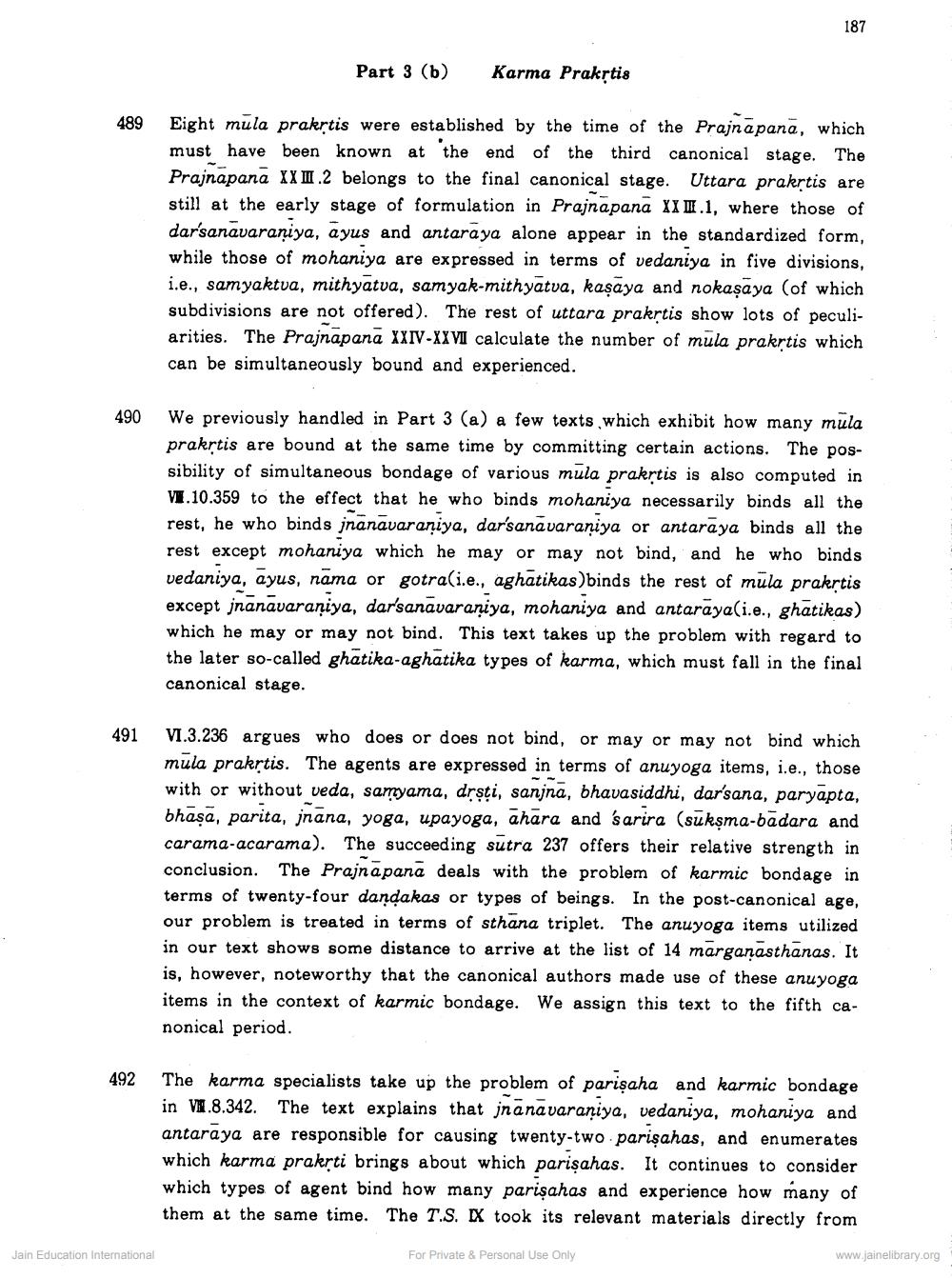________________
187
Part 3 (b)
Karma Prakstis
489
Eight mula prakrtis were established by the time of the Prajnapanā, which must have been known at the end of the third canonical stage. The Prajnapanā XXI.2 belongs to the final canonical stage. Uttara prakrtis are still at the early stage of formulation in Prajnapana XXI.1, where those of darsanavaraniya, ayus and antaraya alone appear in the standardized form, while those of mohaniya are expressed in terms of vedaniya in five divisions, i.e., samyaktva, mithyatva, samyak-mithyatva, kasaya and nokaşaya (of which subdivisions are not offered). The rest of uttara prakrtis show lots of peculiarities. The Prajnapana XXIV-XXVI calculate the number of mula prakrtis which can be simultaneously bound and experienced.
490
We previously handled in Part 3 (a) a few texts which exhibit how many mula prakrtis are bound at the same time by committing certain actions. The possibility of simultaneous bondage of various mula prakrtis is also computed in V1.10.359 to the effect that he who binds mohaniya necessarily binds all the rest, he who binds jnanavaraniya, darsanavaraniya or antaraya binds all the rest except mohaniya which he may or may not bind, and he who binds vedaniya, ayus, nama or gotra(i.e., aghatikas)binds the rest of mula prakstis except jnanavaraniya, dar'sanavaraniya, mohaniya and antaraya(i.e., ghatikas) which he may or may not bind. This text takes up the problem with regard to the later so-called ghatika-aghatika types of karma, which must fall in the final canonical stage.
491
V1.3.236 argues who does or does not bind, or may or may not bind which mula prakrtis. The agents are expressed in terms of anuyoga items, i.e., those with or without veda, samyama, drsti, sanjna, bhavasiddhi, darsana, paryapta, bhasa, parita, jnana, yoga, upayoga, ahāra and sarira (sukṣma-badara and carama-acarama). The succeeding sutra 237 offers their relative strength in conclusion. The Prajnapanā deals with the problem of karmic bondage in terms of twenty-four dandakas or types of beings. In the post-canonical age, our problem is treated in terms of sthana triplet. The anuyoga items utilized in our text shows some distance to arrive at the list of 14 märganästhānas. It is, however, noteworthy that the canonical authors made use of these anuyoga items in the context of karmic bondage. We assign this text to the fifth canonical period.
492
The karma specialists take up the problem of parişaha and karmic bondage in V1.8.342. The text explains that jnanavaraniya, vedaniya, mohaniya and antaraya are responsible for causing twenty-two parişahas, and enumerates which karma prakrti brings about which parişahas. It continues to consider which types of agent bind how many parişahas and experience how many of them at the same time. The T.S. K took its relevant materials directly from
Jain Education International
For Private & Personal Use Only
www.jainelibrary.org




